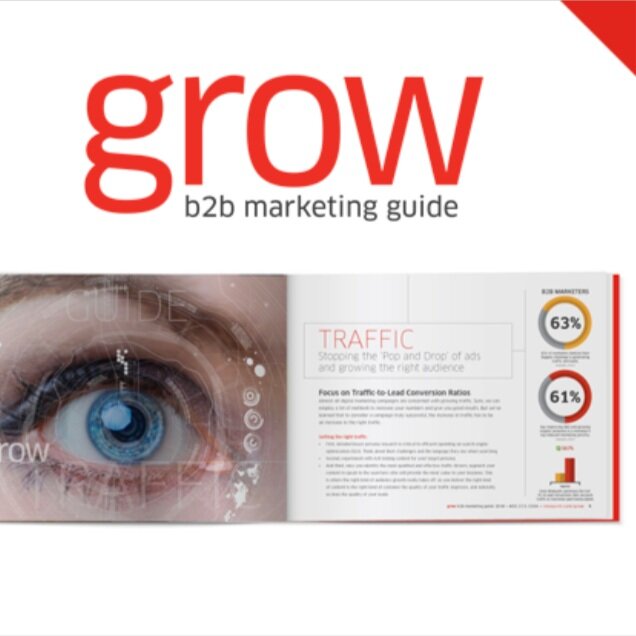Spring is here and summer is coming fast. If you haven’t stuck to your New Year’s resolutions, you’re probably concerned about pool weather. People often use the changing of the calendar year as motivation to change their habits. New Year’s resolutions mean improving yourself to try to become a better person. Though it may be a bit arbitrary to limit improvement to the transition from one period to another, it’s a great motivator for people and, thus, worthwhile.
B2B businesses can take a page from this playbook. With Q1 2017 behind us, perhaps it’s an appropriate time for your company to reevaluate and adjust your marketing strategy, whether you want to make small improvements or a big overhaul.
So should you alter your B2B company’s marketing strategy? How broad should those changes be? These four signs will give you some insight into how to answer those questions:
1. You’re not generating enough leads
The most obvious sign and the best motivator for a strategic shake-up is the results (or lack thereof) your marketing is generating. As a B2B marketer, it can be distressing to see all the work you put in result in only a handful or new, high-quality leads. But don’t fret—this is a common feeling in the business-to-business world. More than three-quarters of B2B marketers feel a lack of confidence in their strategy’s ability to produce results.
![]() Don’t waste time and money by chasing metrics that are more appropriate for B2C goals
Don’t waste time and money by chasing metrics that are more appropriate for B2C goals ![]()
Start by refocusing on the analytical metrics that have the most B2B resonance, which in turn can lead to reverse-engineering a new strategy based on these measurements of engagement. Don’t waste time and money by chasing metrics that are more appropriate for B2C goals and instead work on creating marketing material that elicits a response from searchers, thus beginning a dialogue.
2. Leading wisdom points in a new direction
Inbound marketing is not static. Content marketing, social media, search engine optimization and analytics are the bedrock foundation, but the specifics of how to best use them evolve. Much like a business itself, B2B marketing wisdom adjusts to what data-driven analysis shows is and isn’t working. 2017 will feature emerging technologies and marketing methodologies like the years before and learning these while adopting them in their nascent stage provides companies with a distinct advantage.
It’s important, though, not to adopt every new trend just because it shows up in end-of-year articles online. Some emerging methods—like automation techniques and mobile optimization or utilizing video in tandem with blog posts—are about to be (if not already) mandatory for keeping pace in the B2B marketing world. Others may not be worth your particular company’s time. An industrial manufacturer, for example, usually doesn’t have much need for a Pinterest board or a Snapchat account, no matter how often those names may come up in blog posts around the web.
3. You’ve reached a time to seriously scale up
The growth of your company doesn’t necessarily imply that you should stay the course. Obviously, any company wants year-over-year improvement. To accomplish that, your marketing should ramp up your efforts to match any heightened sales goals for the year ahead.
If sales are growing or lead-generation is above expectations, think about bolstering your marketing team to match this new level of B2B marketing maturity. Flesh out your crew of content creators, creatives and engagement specialists or hire an inbound agency before you notice your content production or web presence start to slip. Then create a new, wider-reaching and more aggressive strategy to match your improved capabilities.
4. You’re learning more about industry-specific tendencies
Don’t discount the value of your own experience and perspective! It’s crucial to remember that B2B inbound marketing is rarely a one-size-fits-all package for companies of any size or industry. Everyone — not only those in the agency world — can glean new insights all the time from the ever-expanding world of inbound marketing.
Pay attention to your prospects and buyers. What have they latched on to in your recent marketing efforts, and what have they ignored? When they give feedback, take it to heart and ask for more. If there’s something in your funnel that leads are responding to or explicitly pointing out that runs in opposition to your current strategy, that’s your best sign to change course.
The gist, here, is not to be afraid to shift your B2B marketing strategy. When the signs are there that you need to change, take your research, data and experience and make improvements. In the end, a B2B marketing strategy is much like each of us as people: We’re never a finished project, always a work-in-progress with room to improve. it’s not too late to think about some resolutions for your strategy and stick to them for a better result in 2017. ![]()







 By
By 
